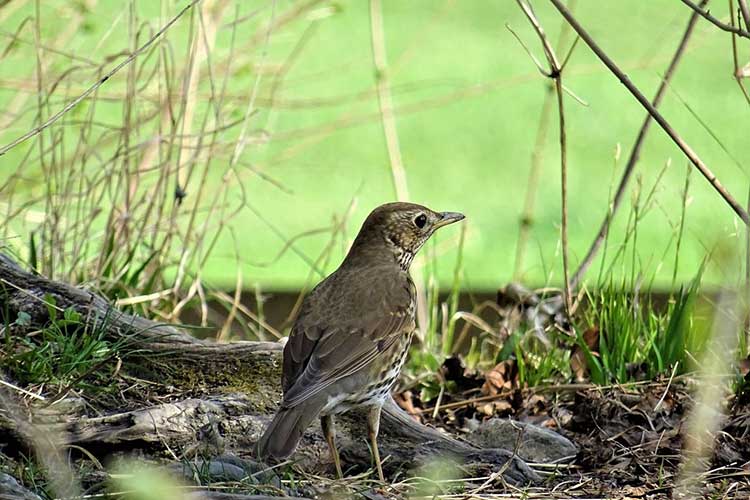Kahuzi Biega National Park is a vast area of primary tropical forest dominated by two spectacular extinct volcanoes, Kahuzi and Biega, the park has a diverse and abundant fauna. One of the last groups of eastern lowland (graueri) gorillas (consisting of only some 250 individuals) lives at between 2,100 and 2,400 m above sea-level.
Straddling the Albertine Rift and the Congo Basin, Kahuzi-Biega National Park is an exceptional habitat for the protection of the rainforest and the eastern lowland gorillas, Gorilla berengei graueri. Extending over 600,000 ha, are dense lowland rainforests as well as Afro-montane forests, with bamboo forests and some small areas of sub-alpine prairies and heather on Mounts Kahuzi (3,308 m) and Biega (2,790 m).
The Park contains a flora and fauna of exceptional diversity, making it one of the most important sites in the Rift Albertine Valley, it is also one of the ecologically richest regions of Africa and worldwide. In particular, the most important world population of eastern lowland gorillas (or de Grauer), sub-species endemic to the Democratic Republic of the Congo (DRC) and listed under the endangered category on the IUCN Red Data Book, uses the mosaic of habitats found in the property.
More About Kahuzi Beiga National Park
Kahuzi Biega national park is a home top over 125 eastern lowland gorillas, which are scientifically called Grauer’s gorilla, and is the largest gorilla specie compared to mountain gorillas, western lowland gorillas and the cross-river gorillas.
Besides gorillas, the national park is a home to other primates such as the eastern chimpanzees (pan troglodytes scheinfurthii) and owl faced monkeys (cercopithecus hamlyni) and several other mammals such as bush elephant (loxodonta Africana), bush buffalo, eastern needle-clawed Galago, Maclaud’s horseshoe bat, alexander’s bush squirrel and the mount kahuzi climbing mouse. Also, the national park is a home to over 350 bird species some of which are endemic to the albertine region.
Top Activities to do/see at Kahuzi Biega National Park
LowLand Gorilla trekking

Accommodating the largest gorilla specie (the eastern lowland gorillas) in the whole world, the national park has become a top attraction for lowland gorilla tours in Africa. Two eastern lowland gorilla families have been habituated and ready for trekking, which has provided travelers with a lifetime experience. Due to the close relativeness of the gorilla specie with human beings (98.8% human genes) making them susceptible to human diseases, masks have been provided to all trekkers to avoid the spread of human wildlife diseases. Trekking gorillas entail hiking in the tropical rainforest following different trails depending on where the family slept last night. Hiking time can range from 30 minutes to six hours in the jungle but an hour strictly is spent interacting with the gorilla after reaching them.
Travelers learn how gorillas play different roles in their respective families, silver back as dads defending and planning for the entire family, adult females nursing the babies whereas the juveniles playing and entertaining the whole family.
Volcano Hiking

You don’t only stop at trekking the eastern lowland gorillas, but also the stunning views of the Park that is clearly seen from the two peaks of the volcanic peaks of Mountain kahuzi and Mount biega that are situated within the heart of the park. These mountains are inactive with Mount kahuzi standing at an elevation of 3308 meters above sealevel and Mount biega at 2790m showing the park’s entire view alongside the wildlife , neighboring communities and other countries not forgetting the bamboo and sub-alpine vegetation which harbor various animals hence providing chances of encountering owl faced monkeys and variety of birds.
You can get more adventurers since Kahuzi-Biega National Park is not just about the lowland gorillas. Hiking is a favorite activity to many as I discovered here. There are pair of inactive volcanic mountains found within the heart of this national park you can hike. Mount Kahuzi is the highest at 3,308m above sea level while Mount Biega, the smaller of the two stands at 2,790m above the sea level.
Nature Walks in Kahuzi-Biega National Park

Travelers here are able to follow different trails in this tropical rain forest to various tourism sites. The trails lead to various sites such as the Chibati waterfalls and three other waterfalls found in the park. Experienced guides are going to lead you in spotting various types of wildlife and vegetation in Kahuzi Biega. Nature here is at its pristine, with travelers able to hear the sweet sounds of singing birds up the trees, and the cool air to freshen the mind of the weary traveler. By the time you depart from Kahuzi Biega National Park, you’ll have a clear mind plus more knowledge about wildlife, and a trip to this amazing park is a memorable one to cherish.
Nature walkers have to follow trails in the tropical rain forest to different tourism sites, including the Tshibati water falls which also leads to other three water falls. The walk takes trekkers through different vegetation types, different wildlife as well as beautiful sounds from the birds singing up on the trees, which brings up great relaxation of the mind. By the time travelers leave the forest; they have clear minds and more knowledge about wildlife in the national park hence a memorable experience.
Bird watching and Forest walks

Besides seeing the gorillas, travelers can take part in bird watching tours. Kahuzi Biega National Park shelters over 342 bird species which include Congo, peafowl, yellow crested helmet shike, hornbill, trogons, Ruwenzori Turacos, sunbirds, African broadbill, Rockefellers sunbirds, helmet-shike among others.
Bird watching is well done I the morning and evening hours during forest walks, which is an added opportunity for travelers. Surprisingly, roughly 42 bird species in the park ate endemic to this area which make you’re the experience more enjoyable.
The park is now one of the threatened sites put under the protection of the International Union Conservation Area (IUCN).
